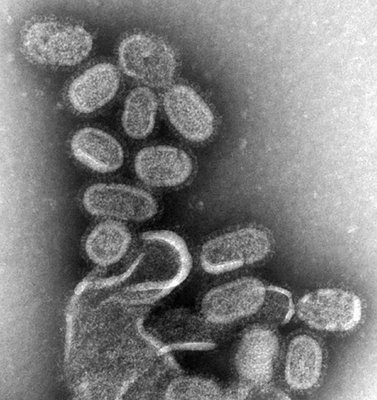 3m body bags could be ordered in flu alert
3m body bags could be ordered in flu alertBy KIRSTY WALKER Last updated at 09:24am on 6th November 2006
A pandemic would require drastic action Ministers are considering stockpiling more than three million body bags because of fears of an impending flu pandemic, a senior Government source has revealed.
Experts have warned that a mass outbreak is 'overdue' - and when it arrives, 25 per cent of the population could be infected.A senior member of the Government involved in planning for a flu pandemic told the Daily Mail a range of scenarios involving hundreds of thousands of deaths had been outlined to ministers by scientific advisers. There is particular concern that mortuaries would run out of space to store bodies - meaning bags could be ordered to be kept at hospitals or by councils.
The ministerial source said that in the worst case scenario, body bags may have to be used twice. Another idea being discussed by ministers is for mass burials or pyres to burn corpses as quickly as possible.
The prospect of 'common burial' would stir up images of the pits used for victims of the Great Plague in 1665.
The ministerial source said that flu was now judged to have overtaken terrorism as the biggest threat facing Britain.
He said: 'Ordering body bags is one of the measures that we could go for. It has been put to us. This is the dominant public health worry of the moment.'
The World Health Organisation has warned that the world is now closer to another influenza pandemic than at any time since 1968, when the last one occurred. During the pandemic in 1918, 40 per cent of the population in Britain was taken ill and 2.5 per cent died.
A pandemic is an epidemic of a disease that spreads quickly, and reaches many countries. Pandemic influenza has symptoms that are similar to ordinary flu but they are more severe.
Experts have warned that preparations for a pandemic in Britain are 'woefully inadequate'.
The vaccine will be manufactured by the pharmaceutical industry once an outbreak has occurred. But experts suggest it could take six months to develop a proper vaccine, by which time the virus would have become global and almost certainly mutated.
Flu pandemics usually occur around three times each century. Last century, there were outbreaks in 1918, 1957 and 1968, when millions died across the world. Experts say this means another one is likely.
The Government has convened a Cabinet committee on the threat, chaired by Health Secretary Patricia Hewitt.
Home Office minister Liam Byrne, Economic Secretary to the Treasury Ed Balls and Cabinet Office minister Pat McFadden also sit on the committee, which is advised by the Government's chief medical office Sir Liam Donaldson and chief scientific adviser Sir David King.
Concern has intensified as result of the spread of bird flu in Asia and ministers have been told that around 300,000 could die in a 'prudent case' scenario in Britain if the H5N1 virus involved in that outbreak mutates into a form that is easily passed from person to person.
A confidential report to the committee has warned that so many deaths would cause delays of up to 17 weeks in burying or cremating victims.
The Home Office said no decision on ordering body bags had been taken. It is not known how many are available in the UK.
But a spokesman said: 'The Government is taking very seriously the possible threat of an influenza pandemic. Prudent precautionary planning is under way across all elements of the response.'
A simulation exercise has been planned for January next year to test the UK's readiness.
The WHO uses a series of six phases of pandemic alert as a system for informing the world of the seriousness of the threat. The level is currently at three.
The Government's Chief Medical Officer Sir Liam Donaldson has said that a British death toll of 750,000 was 'not impossible'.
But the plans to stockpile more than three million body bags reveal ministers believe the total could be far higher.
The worst recorded pandemic was the 1918-19 Spanish flu which killed 50 to 100million around the world. If a new outbreak killed the same proportion of the world's greatly expanded population the toll would be more than 360million.




